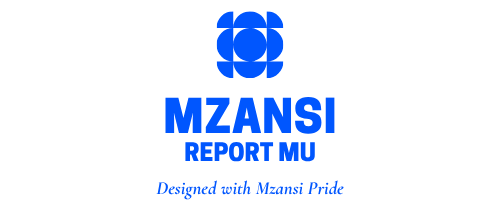
Introduction
South Africa’s Media Moves and advertising scene is undergoing notable transformation. Leadership shifts, refreshed agency tactics, and inventive content strategies are converging with new monetisation experiments to reshape how audiences are reached and how brands tell their stories. Legacy platforms are finding ways to coexist with digital-first channels, while publishers and advertisers lean on data and partnerships to boost relevance and revenue. From print restarts to collaborative campaigns and technology investments, the landscape is becoming more versatile and opportunity-rich. Tracking these developments helps advertisers, media practitioners, and readers anticipate change and capitalise on emerging market spaces.
Media Moves: Leadership Reshaping Industry Direction
Recent executive changes within prominent organisations — including trade bodies and industry associations — are steering fresh agendas. New chairs and senior hires often prioritise modernisation, member support, and clearer pathways for collaboration between brands and platforms. These leadership choices tend to refocus training programmes, influence standards, and nudge policy conversations toward mobile-first and data-savvy approaches. For stakeholders, understanding these appointments is useful for spotting likely shifts in where resources and strategic attention will flow.
Media Moves: Reviving Iconic Print Titles
Several publishers are testing the commercial value of print once more, relaunching familiar mastheads with updated editorial strategies. These initiatives combine curated long-form journalism with digital amplification to create premium packages attractive to advertisers. Print relaunches are being used to trial subscription mechanics, premium ad formats and high-value editorial sponsorships that complement social and programmatic activity. The result is a blended circulation strategy that aims to capture both tactile readership and scalable online distribution.
Media Moves: Agency Strategic Revisions
Agencies are reorganising to better service clients in fast-moving markets. Structural changes often include the formation of specialist squads focused on e-commerce, youth audiences, or data-driven creative. Firms are also investing in martech stacks and in-house analytics so campaigns can be conceived, tested and optimised more rapidly. These shifts improve alignment between creativity and measurable outcomes, helping agencies deliver campaigns that perform across multiple platforms and customer journeys.
Media Moves: Emphasis on Digital Transformation
A heavier emphasis on digital capabilities is reshaping operations across publishers and agencies. Tactics that prioritise mobile UX, short-form video and social commerce are now central to growth strategies. Organisations are also adopting AI-powered audience segmentation, programmatic buying and CRM integrations to increase precision and attribution. This digital push helps teams expand reach, measure engagement in real time and create more accountable campaign models for advertisers.
Media Moves: Creative Storytelling and Engagement
Content teams are experimenting with formats that invite participation and emotional connection. Short video, serialized podcasts, interactive long-reads and community-led content are becoming staples for audience retention. Local cultural references and authentic voices are used to build trust and to drive social sharing. Creative experimentation not only strengthens brand affinity but also opens up new sponsorship and native advertising opportunities that align with user expectations.
Media Moves: Regional and Local Market Expansion
Targeting regional audiences is increasingly central to growth strategies. Outlets are hiring local reporters, launching city-focused newsletters and producing region-specific sponsorship packages to serve underrepresented markets. These initiatives make it easier for local businesses to advertise meaningfully and for publishers to monetise content that resonates strongly with specific communities. The result is a more inclusive content mix and diverse revenue streams across geographic segments.
Media Moves: Investment in Data Analytics
There is rising investment in audience research and measurement tools that inform editorial planning and commercial decision-making. Teams now use behavioural insights, cohort analysis and trend forecasting to refine content timing, placement and messaging. Better data literacy across editorial and commercial teams enables tighter targeting and more persuasive business cases for advertisers. Over time, stronger analytics frameworks create higher campaign ROI and smarter editorial prioritisation.
Media Moves: Collaboration Across Platforms
Strategic partnerships between publishers, creative agencies and technology firms are multiplying. Co-branded projects, shared production resources and cross-platform distribution deals reduce risk and expand capacity. These alliances combine editorial credibility, creative execution and technological reach, creating campaigns that would be difficult for any single organisation to deliver alone. Collaboration also enables rapid experimentation with new formats and monetisation models.
Media Moves: Compliance and Ethical Practices
Regulatory awareness and ethical standards are becoming central operational concerns. Teams are putting processes in place to comply with advertising rules, data protection requirements and emerging content standards. Clear disclosure practices, transparent sourcing and robust privacy measures help preserve audience trust and shield organisations from regulatory risk. Proactive compliance work also supports better long-term partnerships with advertisers and platforms.
Media Moves: Sustainability and Corporate Responsibility
Environmental and social considerations are shaping production and distribution decisions. Organisations are shifting toward lower-carbon production workflows, prioritising digital-first activations, and reducing waste in printed runs. Socially responsible content practices — from fair representation to ethical sponsorship — are also gaining traction. These steps appeal to values-driven audiences and can strengthen brand reputation among consumers and commercial partners.
Media Moves: FAQs
Q1: What do these developments mean for advertisers?
They indicate a broader array of channels and formats to reach more segmented audiences, with improved measurement and clearer attribution for campaign outcomes.
Q2: Are traditional media formats still relevant?
Yes. When combined with targeted digital distribution and premium ad solutions, traditional formats can complement broader omnichannel strategies.
Q3: How can smaller publishers compete?
Smaller outlets can focus on niche audiences, community trust and tailored advertising solutions that deliver local value and higher engagement rates.
Media Moves: Conclusion
The sector’s evolution reflects a mix of strategic renewal, technological adoption and creative reinvention. Organisations that pair strong storytelling with robust measurement, invest in local relevance and form pragmatic partnerships will be best placed to capture growth. Embracing regulatory clarity and sustainability further enhances long-term resilience. For advertisers and content creators, the current moment offers an opportunity to innovate in product, format and commercial approach — and to help shape a media ecosystem that is both sustainable and responsive to audience needs.


